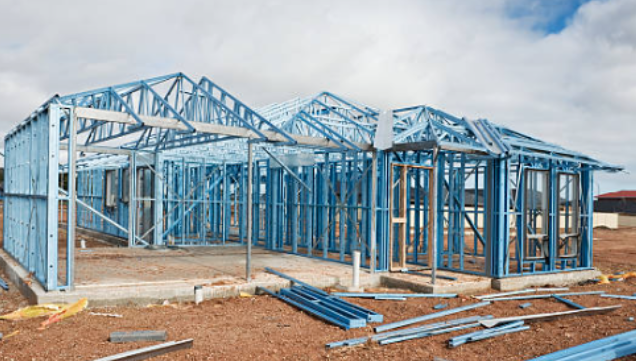
Posted on Thursday, October 3, 2024
The construction of metal buildings relies heavily on precisely engineered components like metal panels, roof sheets, and steel decking, and roll forming machines are at the heart of this process. These machines are critical in shaping raw metal coils into consistent, high-quality building parts, ensuring both strength and efficiency in modern construction projects.
Roll forming is a continuous bending operation where metal sheets or strips are passed through a series of roller dies that gradually shape the material into the desired profile. Each roller station performs a specific bend or fold, ensuring accuracy at every stage of production. This step-by-step method ensures a smooth transformation of flat metal into complex profiles, from roofing panels to steel decking.
One of the biggest advantages of roll forming is its ability to handle high-volume production while maintaining precision. Manufacturers can continuously produce long lengths of metal parts without sacrificing quality, making it an ideal process for large-scale construction projects.
The precision involved in roll forming is one of the key reasons manufacturers rely on this process for metal building parts. Modern roll forming machines are equipped with advanced controls that allow for tight tolerances, ensuring consistent output. Automation further enhances efficiency, enabling manufacturers to produce large quantities of parts quickly, with minimal human intervention.
Additionally, roll forming minimizes material waste, making it a cost-effective solution. The process optimizes the use of metal coils, cutting parts to exact lengths, and avoiding unnecessary material loss. This not only reduces costs but also supports sustainability efforts within the metal building industry.
Roll forming machines play a vital role in the production of metal building parts, offering unparalleled precision and efficiency. From metal panels to steel decking, the components created through roll forming are crucial for the structural integrity and durability of modern metal buildings. As the demand for quick and reliable construction methods grows, roll forming technology continues to evolve, ensuring that manufacturers can meet the needs of today's construction projects.

32/1000 Box Profile Roll Forming Machine – Complete Guide & Specifications
Posted on Sunday, November 16, 2025
High-performance 32/1000 box profile roll forming machine for roofing and cladding. Full specifications, profiles, applications, pricing

PBR / R-Panel Roll Forming Machine – Complete Guide & Specifications
Posted on Sunday, November 16, 2025
PBR / R-Panel roll forming machine for roofing and wall cladding. Full specs, profiles, applications, pricing, and global buying guide. Built to order.

Posted on Sunday, November 16, 2025
How to Diagnose and Fix the Hidden Electrical Problems That Cause Downtime
Copyright 2025 © Machine Matcher.